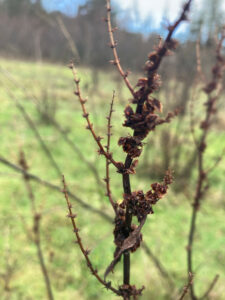My first ever plant-based field research project has not been going well. My study site has been covered in snow and frozen until last week when Vancouver island had a week long deluge of rainfall and abnormally high temperatures that melted and washed all the snow away. I visited my site on the 31st Jan 2024. The sky was grey, cloudy and drizzling and it was ~5 degrees C.. My study site looked like a swamp.
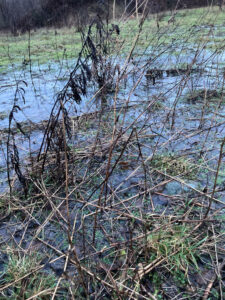
I went back on the 1st Feb 2024 – it has stopped raining, the grey sky had a hint of blue and it was ~7 degrees C. The water had drained from most of the area, but I had a new problem:
My original idea had been to compare the different plants establishing in different sections of the study site. One of the concerns I had was that I have no background in terrestrial ecology, or gardening, and my knowledge of plant species is non-existent. As I saw on 1st Feb, newly added to these challenges was that everything was mostly dead (because it is winter!) I am not sure how I am supposed to compare all the different species of brown stalks…
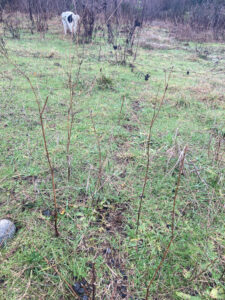
I have changed my study design on the fly after I spotted that two of the larger plants were still distinguishable, even if I do not know what they are. I have named them species #1 and species #2. I noticed some areas of my study site had predominantly species #1 and other areas had predominantly species #2. There seemed to be less occurrences of the two species together. Although both species were in similar open terrain, and section of the site. This makes me hypothesize that the distribution is a factor of how far the seeds can disperse after an individual plant has matured. I predict that there will be a distribution pattern emerging in the counts of the two species. My response variable would be the number of identical species within a transect, and my potential explanatory variable would be the presence or not of a large mature plant of that species within the transect. They would be categorical data (unit counts – presence or not). However, a large mature species could also be continuous data (height of tallest plant in the transect). There may be limitations to this design as the smaller establishing new plants may not have recognizable foliage at present.
Site
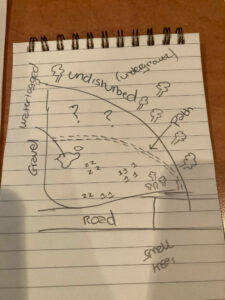
Species #1
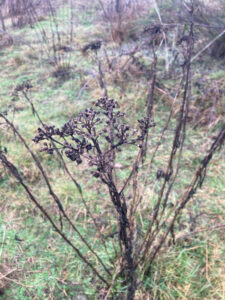
Species #2
